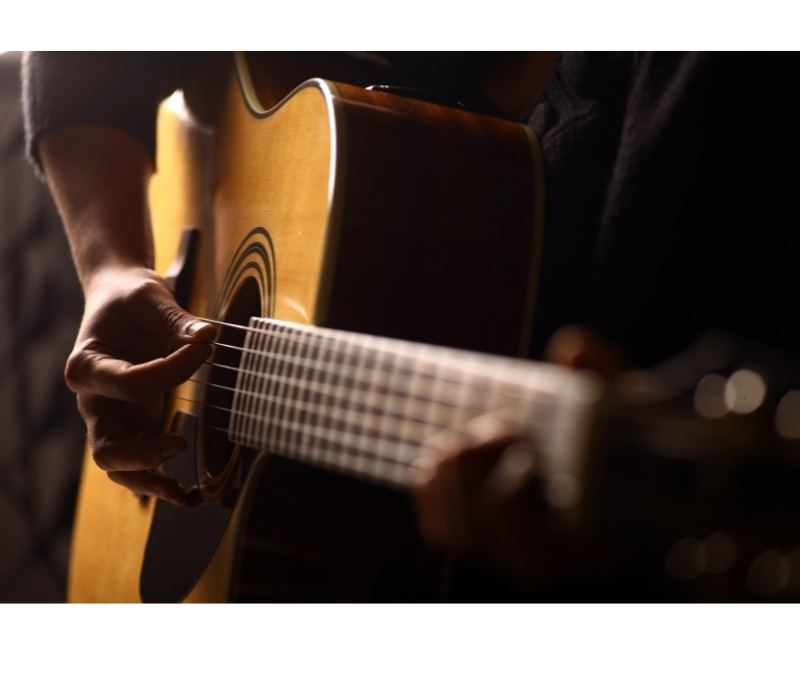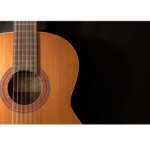Introduction:
In the realm of music, chords are the building blocks that create the harmonious landscape of melodies and progressions. Among them, minor chords hold a special place, evoking emotions ranging from melancholy to introspection. Today, we delve into the realm of minor chords on the guitar, particularly focusing on the 2nd, 3rd, and 6th minor chords in the key of C major. Let’s embark on a journey to unravel the emotive tapestry woven by these chords.
Understanding Minor Chords:
Before we dive into the specifics, it’s crucial to grasp the essence of minor chords. Unlike their major counterparts, which often convey brightness and cheerfulness, minor chords are known for their somber and introspective qualities. Comprising three notes – the root, minor third, and perfect fifth – minor chords possess a distinctive sound that resonates with many musicians and listeners alike.
Key of C Major:
C major stands out as one of the most fundamental and widely used. With no sharps or flats, it serves as a blank canvas upon which musicians paint their sonic landscapes. Within the framework of C major, let’s explore the 2nd, 3rd, and 6th minor chords, each offering a unique hue to the harmonic palette.
- D Minor (Dm): As the 2nd minor chord in the key of C major, D minor brings a sense of depth and longing to musical compositions. To form a D minor chord on the guitar, simply place your fingers on the second fret of the G string, third fret of the B string, and first fret of the high E string. Strumming these strings together produces the hauntingly beautiful sound of D minor, invoking emotions of introspection and yearning.
- E Minor (Em): Moving on to the 3rd minor chord in the key of C major, we encounter E minor, a chord teeming with raw emotion and vulnerability. To play E minor on the guitar, position your fingers on the second fret of the A string and the D string. Striking these strings unfurls the bittersweet tones of E minor, enveloping listeners in a cocoon of introspection and reflection.
- A Minor (Am): Lastly, we encounter the 6th minor chord in the key of C major – A minor. Revered for its versatility and emotive power, A minor captivates audiences with its melancholic allure. To craft an A minor chord on the guitar, place your fingers on the second fret of the D string, G string, and B string. Strumming these strings conjures the poignant resonance of A minor, inviting listeners to embark on a journey of self-discovery and contemplation.
Harnessing the Expressive Potential:
While each of these minor chords possesses its own distinct character, they share a common thread – the ability to convey profound emotions through music. Whether used individually or in combination, these chords serve as potent tools for musicians seeking to evoke a range of feelings within their compositions.
Experimentation is key to unlocking the full expressive potential of minor chords on the guitar. Try incorporating them into different progressions, varying strumming patterns, and exploring dynamic contrasts to imbue your music with depth and richness.
Chord Progressions:
One of the most common minor chord progressions is the I – vi – IV – V, where the tonic chord (I), the relative minor (vi), the subdominant (IV), and the dominant (V) chords in a given key create a hauntingly beautiful journey.
Another popular minor chord progression is the i – iv – V, often found in genres like blues and rock. This progression features the tonic minor chord (i), the subdominant minor chord (iv), and the dominant major chord (V), lending a sense of tension and resolution that captivates listeners. Additionally, the i – III – VII progression, commonly utilized in jazz and pop music, offers a unique blend of melancholy and sophistication, with the tonic minor chord (i), the major third chord (III), and the major seventh chord (VII) crafting a rich chord progression.
Conclusion:
In the realm of guitar playing, minor chords hold a special allure, beckoning musicians and listeners alike into a world of introspection and emotion. From the haunting beauty of D minor to the raw vulnerability of E minor and the poignant resonance of A minor, these chords offer a myriad of possibilities for musical expression.
As we traverse the landscape of the 2nd, 3rd, and 6th minor chords in the key of C major, let us embrace the emotive power they wield and harness it to craft compositions that resonate deeply with ourselves and others. For in the language of music, it is often the minor chords that speak the loudest, whispering tales of longing, hope, and introspection to all who lend them an ear.

Download The FretDeck & Chord Secrets Course!
Download Course










